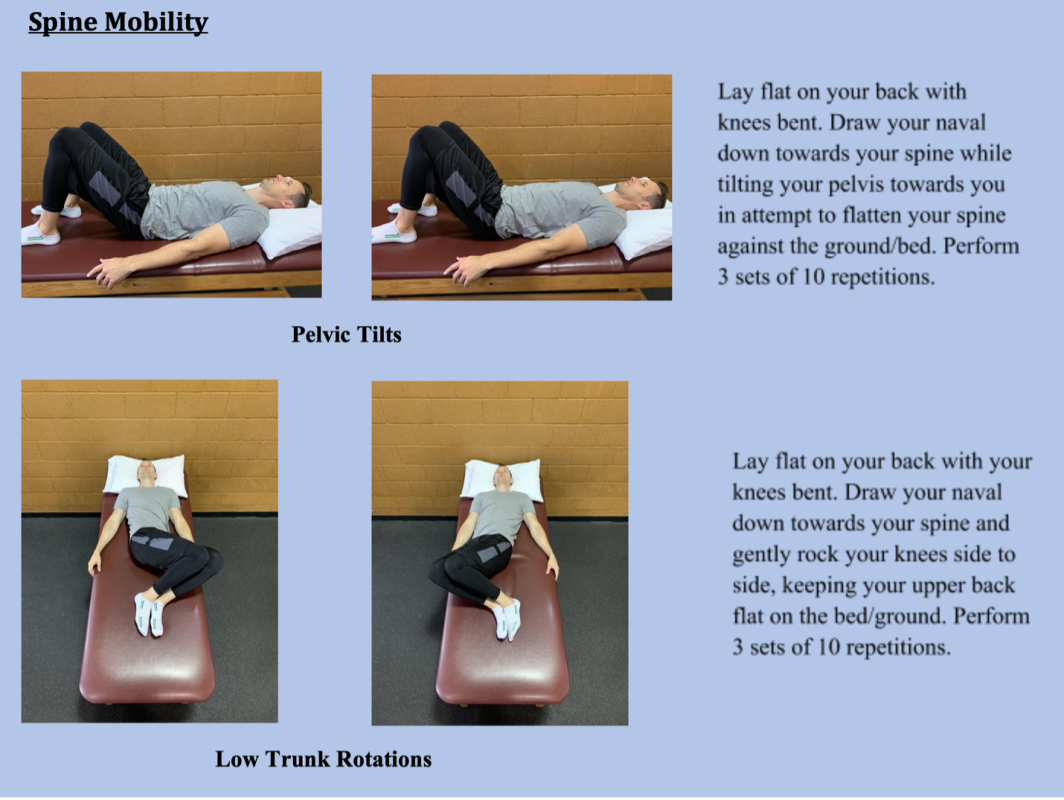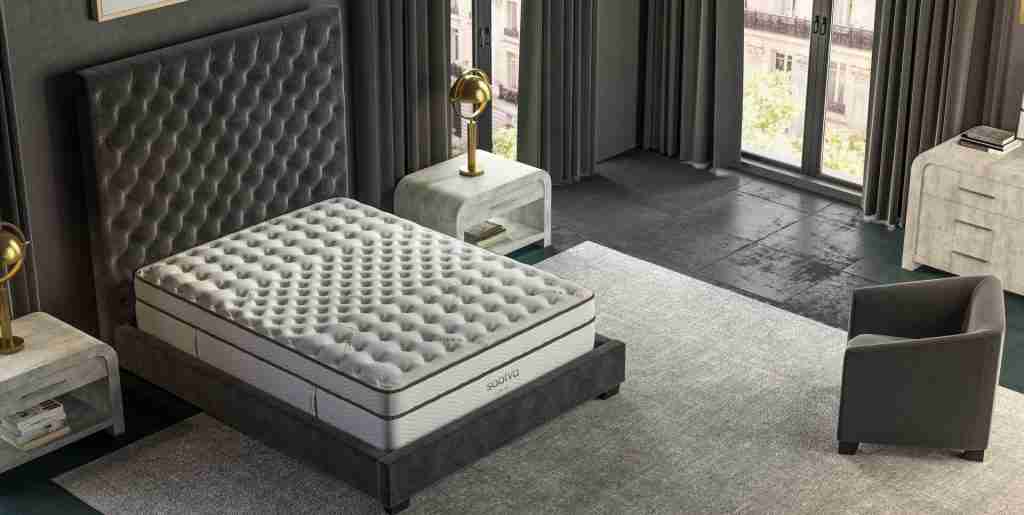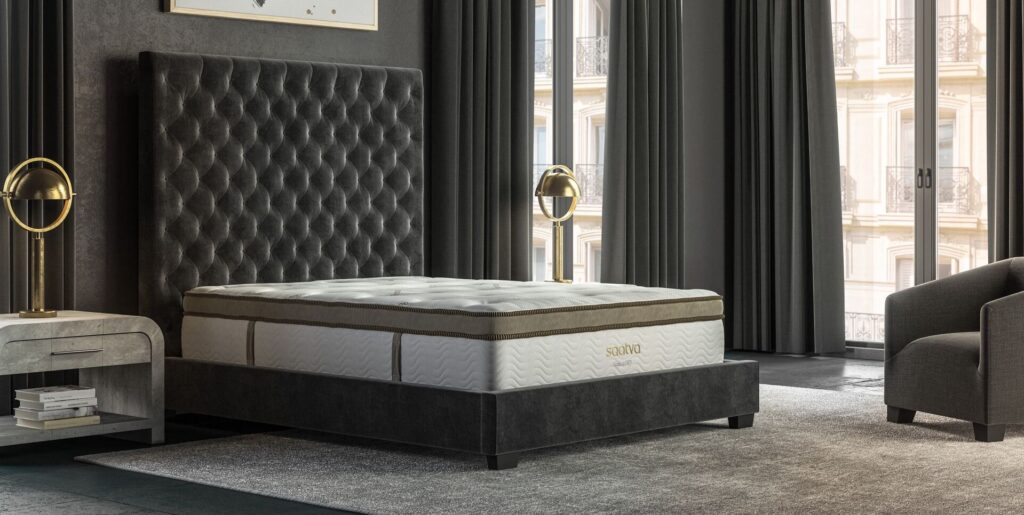
May 17, 2022, updated on July 16, 2025
5 Easy Tips to Train Yourself to Sleep on Your Back
Written by Laura Lifshitz, Aly Walansky

Discover the advantages of sleeping on your back, a position recommended by experts for maintaining spine alignment and reducing aches. Transitioning from side or stomach sleeping is made easier with tips like choosing a medium-firm mattress and a supportive pillow, addressing back pain, allowing natural movement during sleep, and practicing patience.
Most experts agree that back sleeping is the best position for your body to sleep in. The thing is, only about 8% of people are actually back sleepers. [1]
Although side sleeping is the most common sleep position (and is a good option if you have acid reflux or sleep apnea), it does come with some downsides. Namely, side sleeping can put pressure on your hips, shoulders, and neck and cause back pain.
Stomach sleeping, meanwhile, is something most experts just don’t recommend at all. Stomach sleepers have to keep their head turned to be able to breathe. The 90-degree rotation of your head can put additional stress on the joints, ligaments, tendons, muscles, and nerves in your neck and upper thoracic spine. [2]
If you’re a side or stomach sleeper who deals with pain and discomfort at night, then you may want to consider making the switch to back sleeping.
Here, learn all about the benefits of back sleeping—plus, find out how to sleep on your back if it’s not something you’re in the habit of doing.
How to train yourself to sleep on your back in 5 easy steps
It’s not always easy to change your sleep position or train yourself to feel comfortable sleeping in that new position. But it’s worth giving it a try, especially if you find yourself often waking up with back and neck pain in the morning.
There are lots of health benefits to sleeping on your back as this position works with the natural curve of the spine. When the natural curve is supported during sleep, neck and back pain can become much more manageable.
To ease the transition, there are a few things you can do to make the transition easier. Try the following tips to train yourself to sleep on your back so you can start experiencing a good night’s sleep.
1. Choose the right mattress
A medium-firm mattress is the best choice for back sleepers. Anything too soft may cause you to sink into the bed, while anything too firm may put pressure on your shoulders and back. [3, 4]
2. Find a supportive pillow
Beyond your mattress, the right pillow is also key. A commonly recommended pillow for back sleepers is a thinner to medium-thick pillow. This will help keep your head, neck, and spine properly aligned.
A thicker pillow may create undue stress surrounding the muscles of the neck, often resulting in waking up with stiffness in the neck.
3. Address your back pain
To better unload the lower back and decrease feelings of pressure and stiffness, try elevating your knees on top of a pillow 4-6 inches in height. This helps maintain alignment of the hips, in turn reducing low back pain discomfort.
Below are some safe exercises that can be incorporated to reduce tightness and stiffness of the lower back region. These can provide benefits when used before bed and even upon waking in the morning. As always, seek clearance from your healthcare practitioner to ensure you’re healthy enough for physical activity. [4]

4. Know that it’s OK to move around
Movement during sleep is natural, so if you start out your night in the proper sleeping position, that’s considered a great start.
If you end up on your side, remember that a pillow in between the knees and changing from one to two pillows under the head is recommended.
These simple tips can ensure spinal comfort regardless of what sleeping position you end up in.
5. Be patient
Transitioning from stomach or side to back sleeping won’t happen overnight. Each of the tweaks you make may take weeks to get used to.
There may also be a period of trial and error where you figure out what works best for you. But if you give yourself time to get used to your new sleep position, you’ll eventually be rewarded with healthier sleep.
Benefits of sleeping on your back
Back sleeping is ideal because it both keeps your head and spine in alignment, eliminating the pressure that contributes to aches and pains and allows your back muscles to relax.
This position is also excellent for people who complain of back pain and tightness. For people with acid reflux and heartburn, this position works well because it keeps your head above your airway. [6] However, to have your head elevated correctly, you need the right pillow or adjustable bed.
Sleeping on your back helps prevent acne by keeping your face away from your pillowcase. Additionally, back sleepers are less prone to sleep wrinkles. [5] Stomach and side sleepers often wake up with creases on the side of the face they lie on. These creases can cause wrinkles on your face over time. [7] (Here’s why you should sleep on your back if you have a new ear piercing.)
Who should avoid back sleeping
While back sleeping is generally considered a healthy sleep position, there are certain groups of people who should avoid it. If you have any of the following, you may want to avoid sleeping on your back:
- Sleep apnea: “Back sleeping (supine position) can worsen obstructive sleep apnea because gravity causes the tongue, soft palate, and other soft tissues to fall backward into the throat, narrowing or blocking the airway,” explains David Rosen, MD, medical director at Complete Sleep, a sleep apnea treatment company. [8, 9] “This increases the frequency and severity of breathing interruptions during sleep.” Rosen adds that side sleeping is often recommended for sleep apnea patients—but stomach sleeping is generally discouraged due to neck strain. [9]
- Pregnancy (especially second and third trimesters): “The weight of the uterus can compress the inferior vena cava, reducing blood flow back to the heart,” says Rosen. [10]
- Acid reflux/GERD: “Lying flat can allow stomach acid to flow back into the esophagus more easily,” says Rosen. [11]
- Congestive heart failure: “Fluid can accumulate in the lungs and even the neck when lying flat,” says Rosen. [12]
- Certain spine conditions: “Some people with specific back problems may find this position uncomfortable,” says Rosen.
The key is finding what works best for your specific situation while considering any underlying health conditions. “If you have sleep apnea or other medical concerns, consulting with a sleep medicine specialist can provide personalized guidance,” says Rosen.
Best types of mattresses for back sleepers
Part of training yourself to sleep on your back includes finding the right mattress. You already know that a medium-firm mattress is ideal for back sleepers—now it’s time to consider the mattress type.
Innerspring, hybrid, memory foam, and latex foam mattresses can all be good options for back sleepers—but there are a few things you’ll want to keep in mind when selecting a new mattress.
Above all, you want a mattress that provides a balance of comfort and support for your upper body and lower body. Both memory foam and latex foam contour to your body and cradle your spine. This contouring ability can make memory foam and latex particularly comfortable for back sleepers.
However, some back sleepers find that memory foam has too much give, causing you to “sink in.” In that case, a latex mattress or a hybrid mattress with a foam comfort layer for extra cushioning might be better options.
Back sleeper pillow positioning tips
Positioning your pillow (or pillows) the right way can help promote proper spinal alignment and make back sleeping more comfortable.
According to Rosen, this involves using a supportive pillow under your head that maintains your neck’s natural curve without tilting your head too far forward or back. [13]
Additionally, he says you can place a small pillow or rolled towel under your knees to reduce lower back strain. [9] You can also consider placing a thin pillow under your lower back for additional lumbar support, he says.
Tips for staying on your back throughout the night
There are several tricks you can use to stay in that back sleeping position overnight, says Rosen. Here are a couple to try:
- Pillow positioning: “Use body pillows on either side to create barriers or try a wedge pillow or adjustable bed to elevate your upper body slightly,” says Rosen. Elevating your head in bed can also help with sleep apnea symptoms. [14]
- Get creative: “Some people use positional therapy devices or even tennis balls sewn into the back of a pajama shirt to discourage rolling,” says Rosen.
FAQs
Should pregnant women sleep on their back?
Sleeping on your back, especially during the later stages of pregnancy, has been shown to potentially be associated with negative risks both to the pregnant person and baby. [7]
Consider sleeping on your side with one to two pillows between your legs or under your abdomen. This will ensure greater comfort and safer sleep during the third trimester.
Is it normal to feel uncomfortable at first?
We all have an adjustment period when we start sleeping in a new position, and it may feel unnatural or uncomfortable at first. That’s completely normal.
How long does it take to adjust?
According to Rosen, most people need two to four weeks to fully adjust to a new sleep position. “Initially, you may experience difficulty falling asleep, more frequent wake-ups, mild stiffness or soreness, and feeling restless,” he says.
What if I wake up on my side?
It’s a work in progress, and many of us will move around during the night. “Start by spending just the first hour of sleep on your back, then allow natural movement,” says Rosen.
Start sleeping better with a new mattress from Saatva
Back sleeping is the healthiest sleep position for many people—it can help reduce back pain, relieve sinus buildup, and prevent sleep wrinkles. Overall, it’s healthy to train yourself to sleep on your back.
We offer a wide variety of mattresses and bed accessories to help you get comfortable while learning to sleep on your back. Take our online mattress quiz to find the best mattress for your sleep style and ideal position. All of our mattresses come with a 365-night home trial and lifetime warranty.
References
- Cary D, Jacques A, Briffa K. Examining relationships between sleep posture, waking spinal symptoms and quality of sleep: A cross sectional study. PLoS One. 2021 Nov 30;16(11):e0260582. doi: 10.1371/journal.pone.0260582. PMID: 34847195; PMCID: PMC8631621. https://pubmed.ncbi.nlm.nih.gov/34847195/
- Cary D, Briffa K, McKenna L. Identifying relationships between sleep posture and non-specific spinal symptoms in adults: A scoping review. BMJ Open. 2019 Jun 28;9(6):e027633. doi: 10.1136/bmjopen-2018-027633. PMID: 31256029; PMCID: PMC6609073. https://pubmed.ncbi.nlm.nih.gov/31256029/
- Ahmed Radwan, Philip Fess, Darcy James, John Murphy, Joseph Myers, Michelle Rooney, Jason Taylor, Alissa Torii. Effect of different mattress designs on promoting sleep quality, pain reduction, and spinal alignment in adults with or without back pain; systematic review of controlled trials. Sleep Health, Volume 1, Issue 4, 2015. Pages 257-267. ISSN 2352-7218. https://www.sciencedirect.com/science/article/abs/pii/S2352721815001400
- Kovacs, FM. “Effect of firmness of mattress on chronic non-specific low-back pain.” Lancet, November 2003. https://pubmed.ncbi.nlm.nih.gov/14630439/
- Goesel Anson, Michael A.C. Kane, Val Lambros, Sleep Wrinkles: Facial Aging and Facial Distortion During Sleep, Aesthetic Surgery Journal, Volume 36, Issue 8, September 2016, Pages 931–940, https://doi.org/10.1093/asj/sjw074
- Albarqouni L, Moynihan R, Clark J, Scott AM, Duggan A, Del Mar C. Head of bed elevation to relieve gastroesophageal reflux symptoms: a systematic review. BMC Fam Pract. 2021 Jan 19;22(1):24. doi: 10.1186/s12875-021-01369-0. PMID: 33468060; PMCID: PMC7816499. https://pubmed.ncbi.nlm.nih.gov/33468060/
- Robertson N, Okano S, Kumar S. Sleep in the Supine Position during Pregnancy Is Associated with Fetal Cerebral Redistribution. J Clin Med. 2020 Jun 7;9(6):1773. doi: 10.3390/jcm9061773. PMID: 32517385; PMCID: PMC7356729. https://pubmed.ncbi.nlm.nih.gov/32517385/
- Landry, S. A., Beatty, C., Thomson, L. D., Wong, A., Edwards, B. A., Hamilton, G. S., & Joosten, S. A. (2023). A review of supine position related obstructive sleep apnea: Classification, epidemiology, pathogenesis and treatment. Sleep Medicine Reviews, 72, 101847. https://doi.org/10.1016/j.smrv.2023.101847
- Johns Hopkins. Choosing the Best Sleep Position. https://www.hopkinsmedicine.org/health/wellness-and-prevention/choosing-the-best-sleep-position
- Krywko DM, King KC. Aortocaval Compression Syndrome. [Updated 2023 Aug 7]. In: StatPearls [Internet]. Treasure Island (FL): StatPearls Publishing; 2025 Jan-. Available from: https://www.ncbi.nlm.nih.gov/books/NBK430759/
- Schuitenmaker JM et al. Associations between sleep position and nocturnal gastroesophageal reflux: A study using concurrent monitoring of sleep position and esophageal pH and impedance. Am J Gastroenterol 2022 Feb; 117:346. https://doi.org/10.14309/ajg.0000000000001588
- Ceridon, M. L., Morris, N. R., Olson, T. P., Lalande, S., & Johnson, B. D. (2011). Effect of Supine Posture on Airway Blood Flow and Pulmonary Function in Stable Heart Failure. Respiratory Physiology & Neurobiology, 178(2), 269. https://doi.org/10.1016/j.resp.2011.06.021
- Radwan, A., Ashton, N., Gates, T., Kilmer, A., & VanFleet, M. (2021). Effect of different pillow designs on promoting sleep comfort, quality, & spinal alignment: A systematic review. European Journal of Integrative Medicine, 42, 101269. https://doi.org/10.1016/j.eujim.2020.101269
- Iannella, G., Cammaroto, G., Meccariello, G., Cannavicci, A., Gobbi, R., Lechien, J. R., Calvo-Henríquez, C., Bahgat, A., Prinzio, G. D., Cerritelli, L., Maniaci, A., Cocuzza, S., Polimeni, A., Magliulo, G., Greco, A., Ralli, M., Pace, A., Polimeni, R., Re, F. L., . . . Vicini, C. (2022). Head-Of-Bed Elevation (HOBE) for Improving Positional Obstructive Sleep Apnea (POSA): An Experimental Study. Journal of Clinical Medicine, 11(19), 5620. https://doi.org/10.3390/jcm11195620
Laura Lifshitz
Laura Lifshitz is a pint-sized, battery-operated writer and comedienne. A former MTV personality and Columbia University graduate, you’ll find her work in the New York Times, Worthy, Women’s Health, Mom.com, Working Mother, and other sites. Follow her on frommtvtomommy.com.
Aly Walansky
Aly Walansky has been covering lifestyle topics, with a focus on food, home, and wellness, for two decades. She has covered everything from budget shopping to recipes to culinary travel content for national publications that include the Food Network, Southern Living, Food & Wine, Travel & Leisure, The Kitchn, and more. Aly is ranked among top 10 journalists of 2023 and top 10 freelance journalists in 2024, as well as the #1 food journalist of 2022, by Muck Rack.










